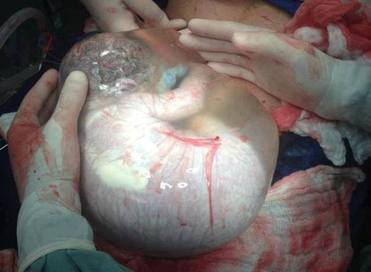 Giving birth with the amniotic sac intact is called a VEILED BIRTH. A membrane that covers the head and face of the newborn is called a 'caul' or also known as hood,veil or veil of tears. Veiled birth is very rare but it is possible and it is less painful. Because the water cushions the baby's head and that means less bruishing for the mother and the baby. In this kind of birth,the sac or also known as veil or caul is never broken and the water is not released until the baby is outside the womb. A caul is harmless and can be easily removed but it has to be done properly so that the baby will not get injured. Veiled births usually occur in premature deliveries. The baby will not take the first breath until he/she hits the air for the first time and the placenta will continue to provide oxygen until that happens, so there is no chance of the baby breathing in the fluid. 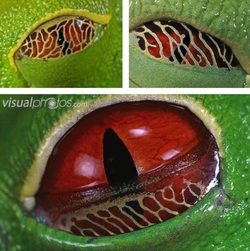 This is what a red eyed tree frog looks like with its eyes closed. They actually have three eyelids. The third is called the nictitating membrane, and it allows the frog to protect their eye from danger and to keep it moist while still allowing some visibility. This membrane is found in many different groups of animals, but most of them it simply looks like an opaque membrane. The tree frog's is a bit more striking! 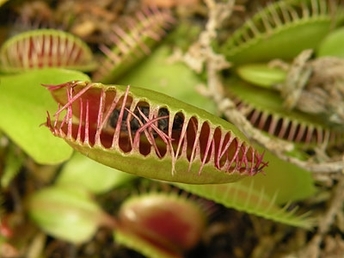 If you've seen the musical/movie "Little Shop of Horrors," you might have been left with a bad impression of what really is a neat plant. While Audrey, the mutant Flytrap in the movie, developed a taste for humans, the real plant prefers insects and arachnids like:
However, in addition to synthesizing glucose, plants also need to make amino acids, vitamins and other cellular components to survive. To accomplish this, plants needs additional nutrients like:
In the bogs favored by Venus Flytraps, the soil is acidic, and minerals and other nutrients are scarce. Most plants can't survive in this environment because they cannot make enough of the building blocks necessary for growth. The Venus Flytrap has evolved the ability to thrive in this unique ecological niche by finding an alternate means of getting key nutrients like nitrogen. Living creatures like insects provide a good source of the nutrients missing from the soil, and they also contain additional energy-laden carbohydrates. source Of all the features we notice about a person upon meeting them, their eyes are often the first connection we make. But some people just aren't satisfied with the color of their peepers, wishing their dark corneas away in favor of a pleasant shade of blue. Those unhappy with brown eyes may find just what they're looking for: Laguna Beach doctor Gregg Homer has developed a new procedure that can actually convert brown-colored eyes to blue in just a matter of weeks.
The operation itself is fairly straight forward: Using a laser tuned to a special frequency, the doctor actually alters the cells that produce the brown coloration in the eye. After a few weeks, the darker color begins to fade, revealing the blue pigment underneath. As the doctor explains it, the procedure only works for brown-eyed individuals, as they already have a bluish coloration hiding underneath. According to Homer, the procedure takes just 20 seconds to complete. And because of the large number of people wishing they were born with baby blues, he has already been contacted by thousands of potential clients. Homer and his company, Stroma Medical, have been working on the technology for over a decade, and say it will be available on a consumer basis within three years. He estimates the procedures will cost about $5,000 each, and as the brown coloration doesn't appear to regenerate, your eyes should stay blue for the rest of your days. Unfortunately, that almost means it's completely irreversible, so if you end up regretting a hasty decision to switch, you'll never be brown-eyed again. Not surprisingly, the practice has come under scrutiny by some who believe the color of our eyes is somehow more sacred than other parts of the human body — like the bits that plastic surgeons alter every day. There's also the risk that long-term damage may result from the procedure, and without longitudinal research, Homer can't guarantee that problems won't arise down the road. Still, with would-be patients lining up by the thousands, it's clear that some people believe the risk is worth the reward. |
This is a collection of interesting facts collected from the internet. Archives
September 2015
Categories |

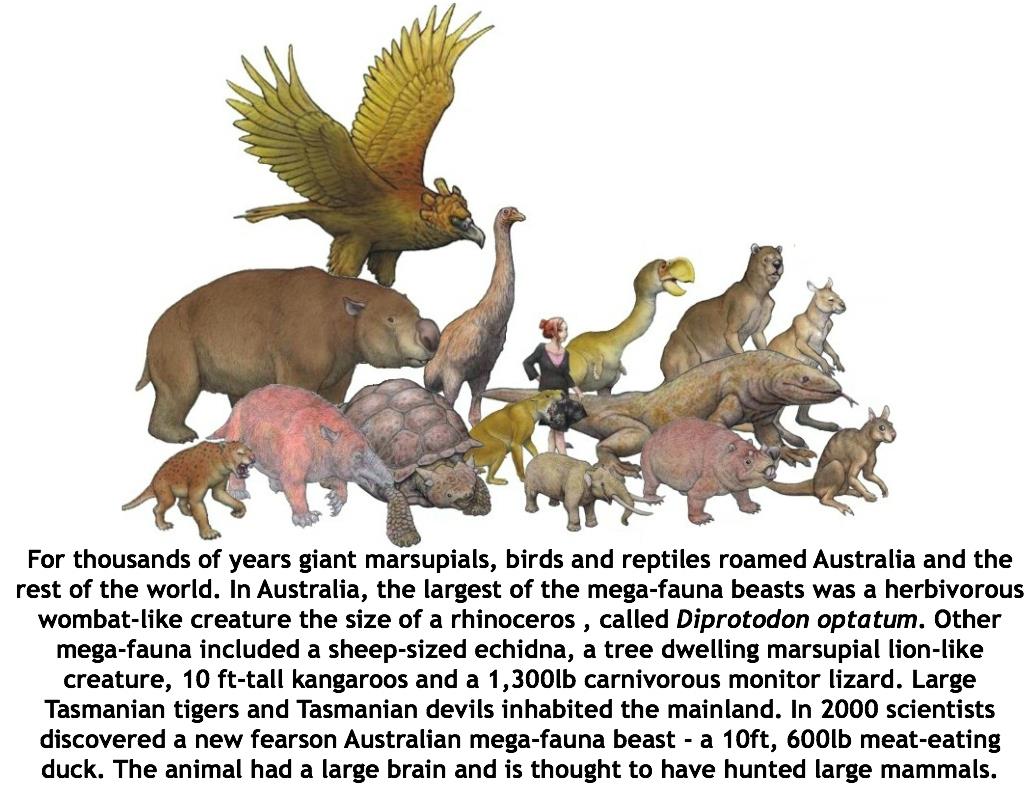
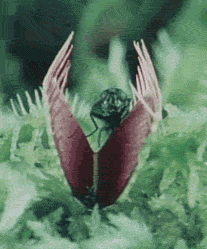
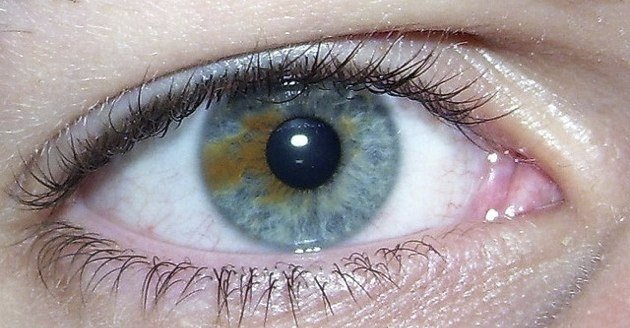
 RSS Feed
RSS Feed
